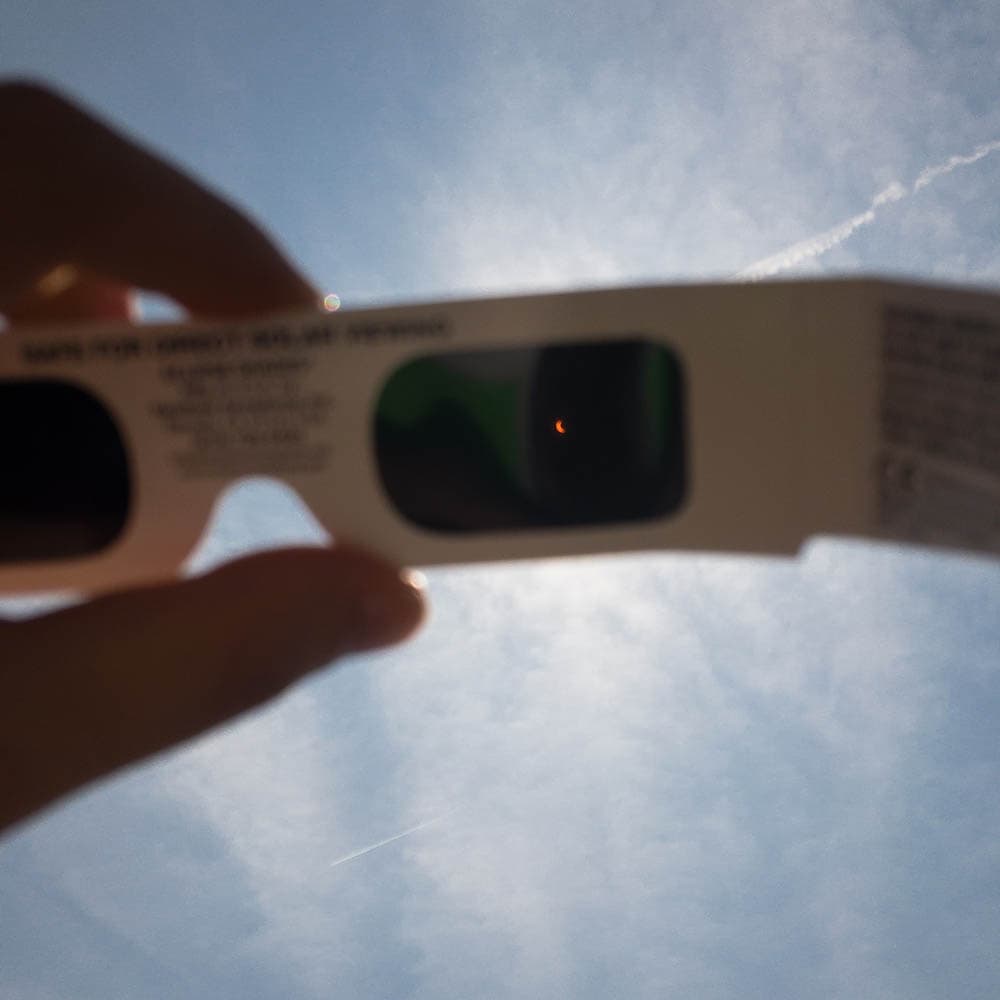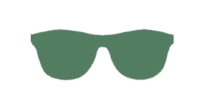5 DIY Plans for Solar Eclipse Glasses (Simple & Cheap) (With Pictures)
Last Updated on

When eclipses come around, there always seems to be a shortage of solar eclipse glasses. The good news is that with a bit of preparation and planning, you can safely make your own.
Unfortunately, there’s a great deal of bad advice out there, and certain “DIY plans” can lead to permanent eye damage. Here are five different DIY solar eclipse glasses that are safe. We also highlight why a few of the popular options out there aren’t safe.

The Top 5 DIY Plans for Solar Eclipse Glasses
1. Solar Eclipse Viewing Glasses by Al Paul
| Materials: | Solar film, glue, and an old pair of glasses |
| Tools: | Scissors |
| Difficulty Level: | Easy |
The creator of this DIY video is abundantly clear that they’re not using tinfoil. It does look like tinfoil, but it’s actually solar film. This is one of the easiest ways to DIY a pair of completely safe solar eclipse glasses. It’s also a low-cost option, so you won’t have to spend much to safely view the eclipse.
2. DIY Solar Eclipse Glasses by EyeCare Associates of South Tulsa
| Materials: | Solar film, glue, and cardstock glasses |
| Tools: | Scissors |
| Difficulty Level: | Easy |
If you don’t have a pair of disposable glasses on hand, this DIY cardstock solar glasses plan is exactly what you need.
You’ll still need solar film, not tinfoil, to get adequate levels of protection, but you won’t need any glass frames. However, you’ll either need to cut out your cardstock glasses or find a template to use with this plan.
Either way, this is one of the most affordable options out there to safely look directly at a solar eclipse!
3. Make Your Cereal Box Eclipse Viewer by Fox 35 Orlando
| Materials: | Cereal box, white paper, and tape |
| Tools: | Scissors |
| Difficulty Level: | Easy |
While this solar eclipse viewer won’t let you look directly at the sun, it’s the best that you can do if you don’t have any solar film. It’s completely safe and it’ll let you see what’s going on, but it’ll be through a reflection instead of looking directly at the eclipse.
Even better, this viewer puts your back toward the Sun to use it, which eliminates the risk of any accidental direct viewing. It’s a great DIY craft for kids, and it’s fun for them to use too!
4. The Shoebox Eclipse Viewer by Scout Life
| Materials: | Shoebox, aluminum foil, white paper, and tape |
| Tools: | Scissors |
| Difficulty Level: | Easy |
An outstanding option to make your own indirect solar eclipse viewer is this DIY shoebox eclipse viewer. This DIY project puts an old shoebox to good use, along with a few other common household items.
It’s an excellent project for kids, and it’s one of the easiest DIY indirect viewers to use and get a great view of what’s happening. It’s completely safe to use too, so you don’t have to worry about risking your vision with this kit.
5. Simple Solar Eclipse Viewer by Orion&Ponchi Maker
| Materials: | Toilet paper tube, aluminum foil, white paper, and a rubber band |
| Tools: | Scissors |
| Difficulty Level: | Medium |
Repurpose an old toilet paper roll into a great DIY indirect eclipse viewer. Compared to some other DIY indirect viewers, this one does take a bit more patience, but it’s still not an overly complicated project.
It also doesn’t give you as large of a view as some other projects, but it is the most compact, making it easy to take wherever you’re going to view the eclipse!

Options to Avoid
The vast majority of DIY solar eclipse glasses plans out there aren’t safe to use. Two options are distressingly common and should be avoided.
The first is tinfoil. While tinfoil is a popular option, there’s no proof that it blocks out enough light for safe viewing. The only thing that you should use tinfoil for when it comes to solar eclipse devices is to build an indirect solar eclipse viewer.
The second common option is burning glass and looking through the soot. While this can work effectively, the problem is that there’s no way to know if you have enough soot to make it safe. Even worse, all it takes is high winds or your fingers to rub a little soot off and let in too much light.
If you’re trying to look directly at a partial or annular solar eclipse, you need solar film to build your DIY glasses. Don’t settle for anything else; the risk isn’t worth your vision.

Conclusion
Solar eclipses are an exciting time to look up at the sky and the sun, but you need to do it safely. With any of the DIY plans highlighted here, you can do that without having to worry about whether you’re damaging your vision.
Featured Image Credit: Jason Howell, Unsplash
About the Author Robert Sparks
Robert’s obsession with all things optical started early in life, when his optician father would bring home prototypes for Robert to play with. Nowadays, Robert is dedicated to helping others find the right optics for their needs. His hobbies include astronomy, astrophysics, and model building. Originally from Newark, NJ, he resides in Santa Fe, New Mexico, where the nighttime skies are filled with glittering stars.
Related Articles:
Monocular vs Telescope: Differences Explained (With Pictures)
How to Clean a Refractor Telescope: Step-by-Step Guide
How to Clean a Telescope Eyepiece: Step-by-Step Guide
How to Clean a Rifle Scope: 8 Expert Tips
What Is a Monocular Used For? 8 Common Functions
How to Clean a Telescope Mirror: 8 Expert Tips
Brightfield vs Phase Contrast Microscopy: The Differences Explained
SkyCamHD Drone Review: Pros, Cons, FAQ, & Verdict
